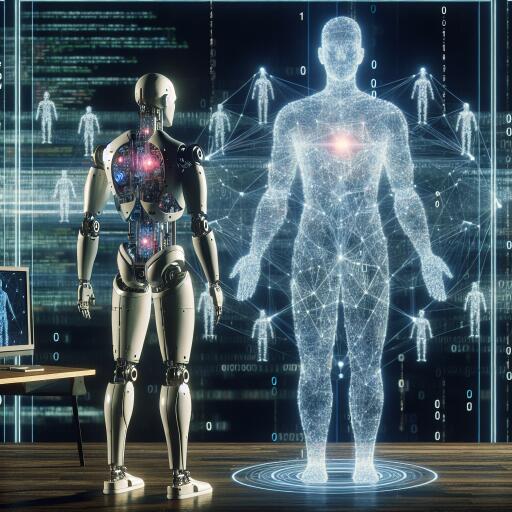Revolutionizing Robotics with Unsupervised Deep Learning for Human Motion Imitation
In the exciting realm of robotics, the concept of machines able to mimic human movements in real-time holds transformative potential. Imagine robots that can seamlessly integrate into our daily lives, undertaking tasks without the need for intricate pre-programming. The journey towards achieving this level of imitation learning has seen substantial progress yet grapples with significant challenges, primarily due to the differences between human and robotic structures.
However, a groundbreaking study by researchers from U2IS, ENSTA Paris, is paving the way towards more sophisticated humanoid robotic systems capable of human-like motion. Utilizing the power of unsupervised deep learning, their recent paper introduces a novel model aimed at enhancing motion imitation capabilities. This development marks a significant milestone in robotic technology, addressing the longstanding issue of human-robot correspondence.
The innovative approach divides the imitation process into three strategic stages: pose estimation, motion retargeting, and robot control. At the outset, the model employs pose estimation algorithms to identify the skeletal joints’ positions that form the basis of human movement. This crucial step transcends the simple replication of actions, instead aiming for a deeper understanding of human motion nuances.
Following pose estimation, the model enters the motion retargeting phase, where it translates human joint positions into a format that can be realistically executed by a robot’s physical structure. This translation is essential for ensuring that the robot’s movements are not only similar but also physically possible given the robot’s unique design constraints.
The final step involves planning the robot’s motions using the translated sequences. The goal here is to enable dynamic, human-like movements that allow the robot to perform tasks in a manner closely resembling human execution. The capability for dynamic motion planning is what truly sets this model apart, offering a glimpse into a future where robots can adapt and learn from human behavior in real-time.
Developing such an advanced model requires a departure from conventional methods. Traditional training methods rely on pairs of associated robot and human motions, a dataset that is exceedingly rare and difficult to compile. The researchers therefore turn to unsupervised deep learning techniques for unpaired domain-to-domain translation, a method that holds promise despite the challenges of data scarcity.
Initial evaluations of the model have revealed insights into the current limitations of deep learning methods in real-time motion retargeting. Although the results did not meet the researchers’ expectations, these findings are invaluable for guiding future improvements. The team remains committed to refining their approach, aiming to overcome the challenges identified in their preliminary tests.
As the researchers look forward, their focus will span three key areas: understanding the shortcomings of the current model, creating a robust dataset of paired motion data, and optimizing the model’s architecture for more precise retargeting predictions. Despite the hurdles faced so far, the project’s potential impact on the future of robotics is undeniable. Unsupervised deep learning, with its capacity for nuanced, adaptable learning, stands at the forefront of revolutionizing how robots learn from and interact with the human world.
In conclusion, this innovative research from U2IS, ENSTA Paris, signifies a major step forward in the quest for human-like robotic imitation. By tackling the inherent challenges of human-robot correspondence and leveraging the potential of unsupervised deep learning, the team is laying the groundwork for a future where robots can more intuitively and effectively mirror human actions, making them more capable and versatile helpers in our everyday lives.









